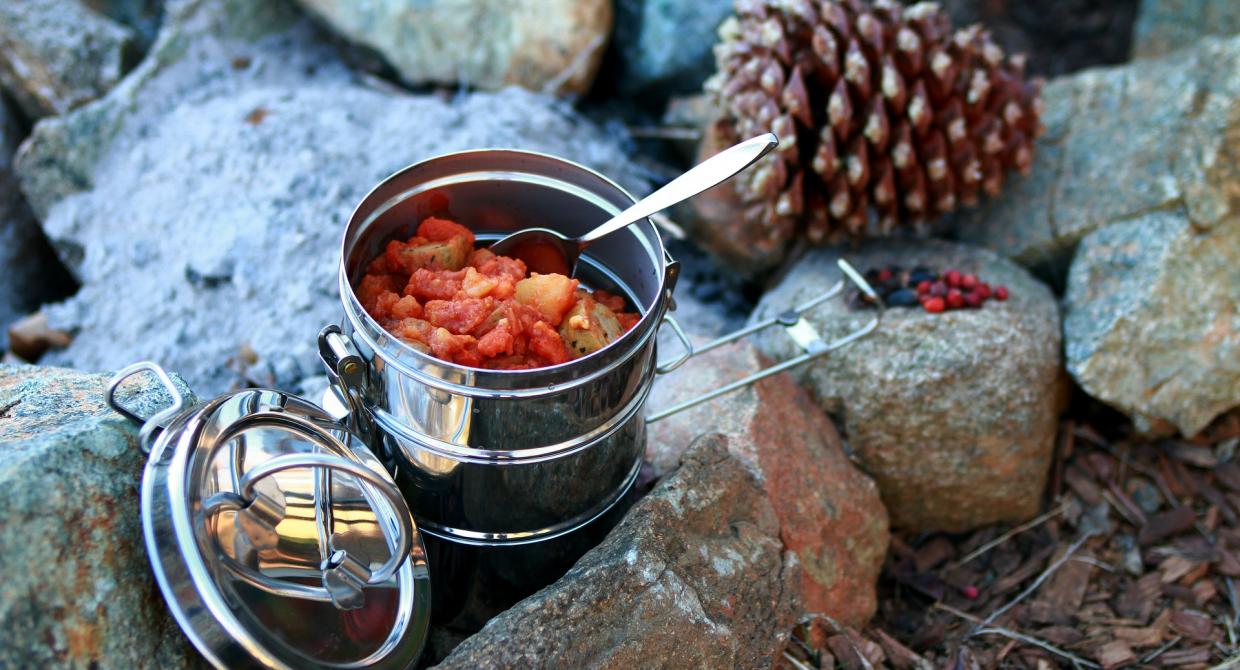Zero-Waste Hiking Hacks
Title

Body
Are you looking to take the next step in minimizing your impacts on the outdoors and the environment?
The concept of zero waste can be defined as aiming to send nothing to a landfill. While being 100% zero-waste may not always be possible, simply being more conscious of the single-use items we consume during our outdoor endeavors can have many positive impacts for the planet.
- Avoid potential litter: By not packing in single-use items like wrappers and plastic bottles, you avoid the risk of those items becoming litter on your trail adventures.
- Alleviate stress on landfills: Choosing reusable items both on and off the trail will reduce the amount of waste that ends up in our landfills or as litter on our public lands.
- Protect the land + wildlife you love: Taking action to reduce your waste while outdoors will benefit your favorite parks and the wildlife who call it home.
Let's talk about three easy steps we can all take to reduce our waste when recreating outdoors.
Trail Snacks: Re-package, Reuse, or Repurpose
If you’re not ready to transition away from your favorite-flavor Clif bar, an easy introductory trick is to re-package your trail snacks. Reusable beeswax or cloth bags are lightweight and work great for wrapping your summit sandwich or trail treats. Stainless-steel or silicone food containers are also lightweight options for food storage. We love Stasher bags because they offer a variety of sizes and are easy to clean.
Not ready to make the investment in new reusable options? You can repurpose household containers like Tupperware or small spice jars to also hold your adventure fuel.
When you’re looking to get more advanced in your zero-waste journey, you can opt for plastic-free packaging by making your own trail mix or granola bars and buying your ingredients in bulk at health food stores. And going plastic-free doesn’t have to mean you can’t enjoy your favorite candy! Stores like Whole Foods often offer candy options in their bulk aisle.
Ditch the Plastic Water Bottle
On any given hike, you should be packing and drinking at least one liter of water. For single-use, plastic bottle water drinkers, that means using at least two 16.9 ounce bottles. Based on research done by the American Hiking Society in 2013, almost 35 million people go on day hikes each year. If each of these hikers were to bring two plastic water bottles on just one hike a year, it would add up to 70 million bottles or over 3.5 million pounds of single-use plastic.
By each of us choosing reusable water bottles on our trail hikes, rides, and runs, we’re taking one small step away from single-use plastic that adds up to a big, positive impact. We highly recommend Hydro Flask or Klean Kanteen reusable water bottles. Although they're made of plastic, Nalgenes are a great reusable option if you're not ready to pack the weight of a stainless steel bottle. In going zero-waste, the first goal is t
When Nature Calls: Leave No Trace + Pack It Out
When nature calls and facilities aren’t available, locate your bathroom spot at least 200 feet away from trail, road, or water. Pack a trowel to dig a cathole at least 6-8 inches deep to bury your solid waste business and any toilet paper. Extra Leave No Trace points for packing your TP out with you! Wipes or feminine hygiene products need to be packed out with you. If you squat when you pee, Kula Cloth is a great alternative to toilet paper.
Want to learn more about how to go to the bathroom outdoors?
Leave No Trace Center for Outdoor Ethics has helpful resources and videos to walk you through the process.
Stay tuned for more outdoor zero-waste tips.
Next time, we’ll learn more about sustainable gear shopping and backpacking.
